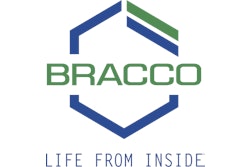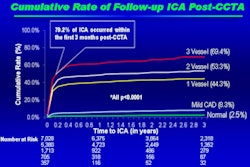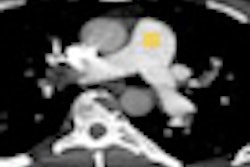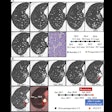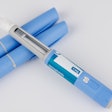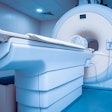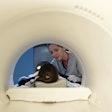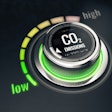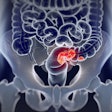Contrast media dose can be reduced in coronary CT angiography (CCTA) scans acquired with a 320-detector-row scanner without significantly affecting image quality, according to a study in the October edition of the American Journal of Roentgenology.
Researchers from Brigham and Women's Hospital and Harvard Medical School analyzed 108 CCTA exams acquired with a 320-detector-row CT scanner. They found that a contrast media protocol based on 60 mL of contrast "had sufficient enhancement in more than 96% of coronary segments," said study co-author Dr. Frank Rybicki in a statement accompanying the study's release (AJR, October 2011, Vol. 197:4, pp. 844-859).
Centers typically use as much as 80 mL of contrast for coronary CTA. While this is a reasonable amount for 64-detector-row CTA, 80 mL is too much for 320-detector-row scanning, according to the authors.
Their study aimed to evaluate the difference in coronary enhancement provided by 60 mL versus 80 mL of contrast medium for prospectively electrocardiogram-gated single-heartbeat axial MDCT on a 320-detector-row CT scanner (Aquilion One, Toshiba America Medical Systems).
They divided the patients into two groups: group 1 (n = 36) received 60 mL of the iodinated contrast medium and group 2 (n= 72) received 80 mL. The contrast media protocol included iopamidol 370 mg I/mL (Isovue 370, Bracco Diagnostics), followed by 40 mL of saline, administered at a rate of 6 mL/sec in all patients. The radiologists assessed image quality in the coronary arteries subjectively, performing region-of-interest measurements in Hounsfield units (HU) in the aorta as well as in the proximal and distal arteries.
Results of the subjective image analysis showed that image quality was slightly better in group 2. "Image quality among the 80-mL group was higher, although not statistically significant, for every single segment," Dr. Kanako Kumamaru, Rybicki, and colleagues wrote. "When all scores were pooled, the differences reached statistical significance."
Nevertheless, attenuation in group 1 was greater than 300 HU in 96.7% of all coronary segments, according to the authors. Even in patients in group 1 with a body mass index greater than 30, 92.8% of the segments had attenuation greater than 300 HU, and all segments were enhanced more than 250 HU.
The results make it clear that the higher contrast doses used for 320-detector-row CCTA in many centers are "not necessary, and the extra contrast means unnecessary costs and increased risk of contrast-induced nephropathy to the patients," Rybicki said in his statement. Many patients undergoing CCTA are already at increased risk of contrast nephropathy, he added.
"These results support the general use of 60 mL of iopamidol for CT angiography done on 320-detector-row CT scanners," Rybicki said.





